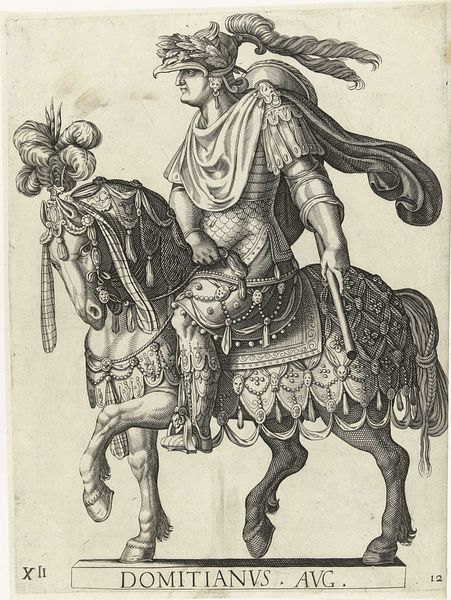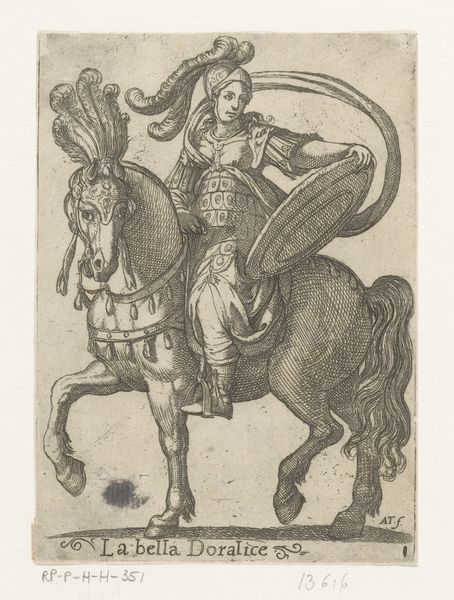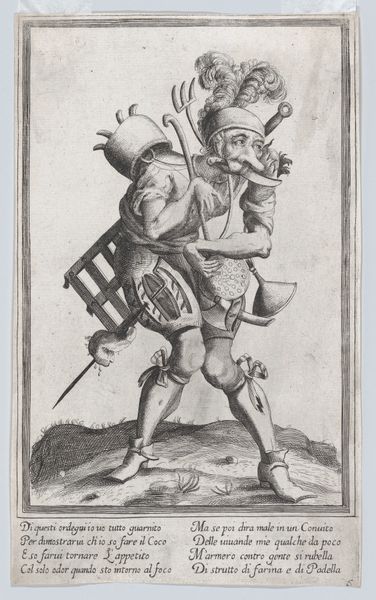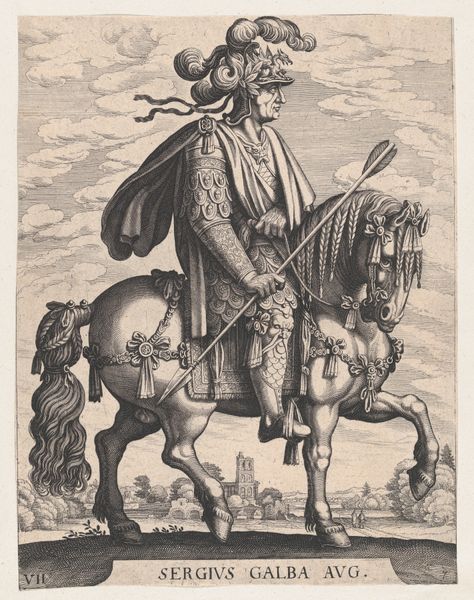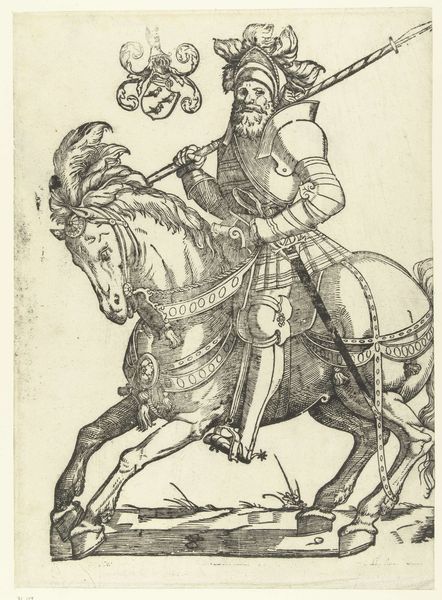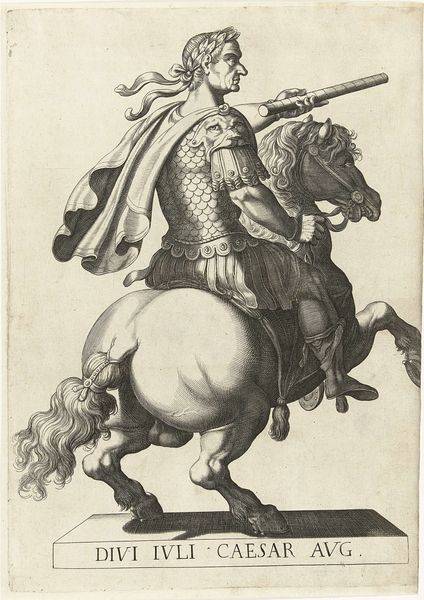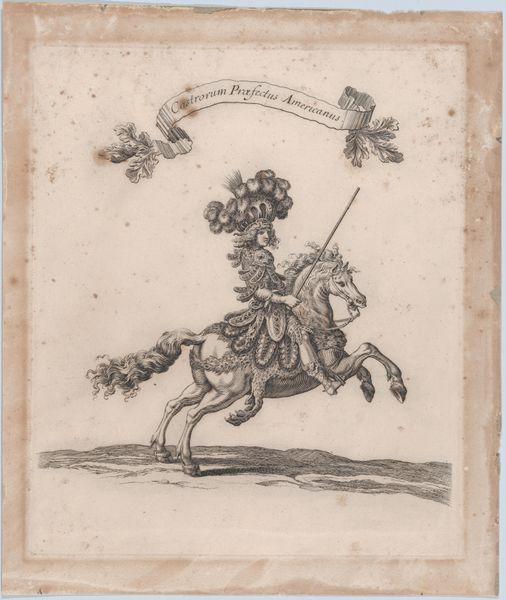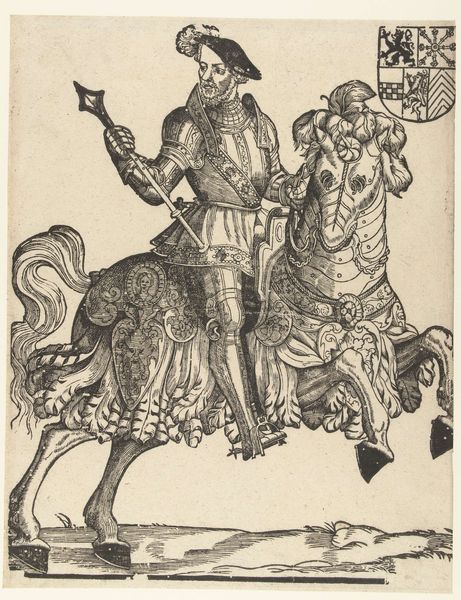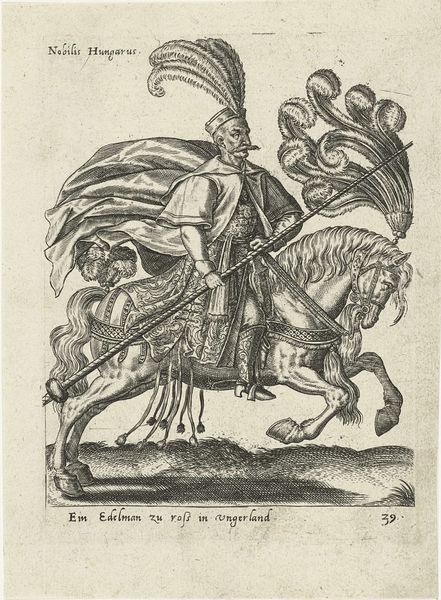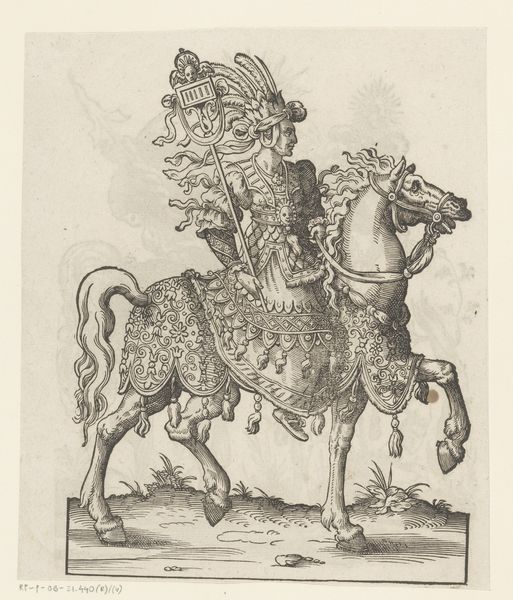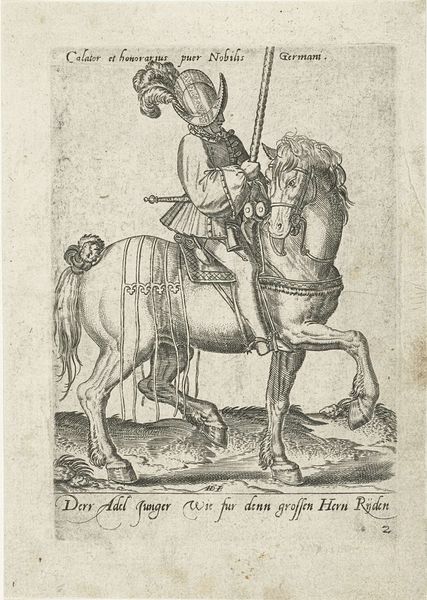
Hurlacher (recto) and Rappold (verso) Families, from Paul Hector Mair’s Bericht und anzeigen aller Herren Geschlecht der loblichen Statt Augspurg 1538 - 1550
0:00
0:00
drawing, print, engraving
#
drawing
#
weapon
#
medieval
# print
#
pen sketch
#
figuration
#
11_renaissance
#
soldier
#
armor
#
engraving
Dimensions: sheet: 12 3/8 x 8 1/4 in. (31.4 x 21 cm)
Copyright: Public Domain
Editor: This intricate engraving, titled "Hurlacher (recto) and Rappold (verso) Families," was created between 1538 and 1550 by Christoph Weiditz. I'm struck by the level of detail in the depiction of the armor and weaponry. What can you tell me about this piece? Curator: The detailed rendering directs our attention to the means of production. Consider the social context: printed images like this circulated among elite families. We see an almost fetishistic interest in the accoutrements of power – the armor, the axe, the heraldic shield. This isn't just a portrait; it's an advertisement of wealth, lineage and military strength. Who would commission such a print, and what message were they hoping to convey? Editor: It makes sense that the focus would be on showcasing wealth and status. But wouldn't a painting accomplish this more effectively? Why a print? Curator: Ah, that’s a key point! Prints allowed for reproduction and distribution on a wider scale. It speaks to a new kind of consumption, doesn't it? Families could disseminate their image more broadly. It transformed lineage from simply a personal fact into something almost industrial in production. Were such items status symbols themselves? How does the production of these images help maintain class structures? Editor: So the medium itself, the printmaking, is central to understanding the work’s purpose and impact beyond just the image it depicts? Curator: Precisely. We move beyond just admiring the knight and ask: what were the material conditions and social networks that enabled this image to exist, to circulate, and to shape perceptions of power? Editor: I hadn't considered how the printing process amplified the statement being made. Thank you for making me think about the impact of distribution.
Comments
No comments
Be the first to comment and join the conversation on the ultimate creative platform.
